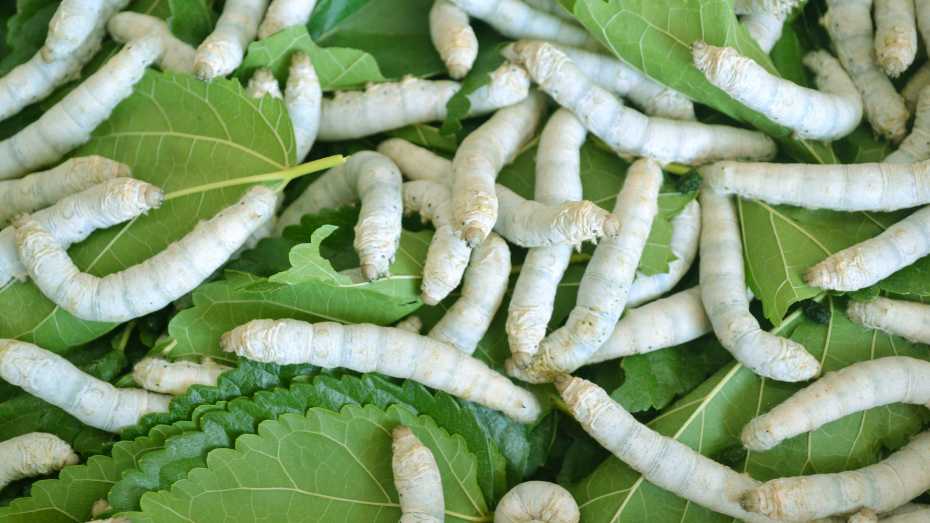Silkworms are fascinating creatures that produce silk. By growing silkworms at home, you can observe their life cycle and experience the wonder of silk production firsthand. Here is a step-by-step guide to help you successfully grow silkworms at home:
Materials Needed:
- Silkworm eggs or young silkworm larvae
- Mulberry leaves or commercial silkworm food
- Plastic container or silk breeding cage
- Ventilated lid or covering
- Spray bottle
- Mulberry leaves or food supply
Step 1: Obtain Silkworm Eggs or Young Silkworm Larvae
Start by acquiring silkworm eggs or young silkworm larvae. You can purchase them online or from local insect breeders. Ensure that the eggs or larvae come from a reliable source.
Step 2: Prepare the Rearing Container
Choose a suitable container for rearing the silkworms. A plastic container or silk breeding cage works well. Ensure that the container is spacious enough to accommodate the growing silkworms and allows good ventilation.
Step 3: Line the Container with Mulberry Leaves or Commercial Silkworm Food
Line the container with fresh mulberry leaves or use commercial silkworm food. Mulberry leaves are the preferred food source for silkworms, but if they aren’t available, silkworm-specific food can be used as an alternative.
Step 4: Add Silkworm Eggs or Larvae to the Container
Carefully place the silkworm eggs or larvae onto the food source in the container. Ensure that they are distributed evenly and have ample space to move and feed.
Step 5: Maintain the Silkworm Habitat
Ensure that the silkworm habitat remains clean and suitable for the worms’ growth. Silkworms are sensitive to temperature and humidity, so keep the container in a warm and well-ventilated area. Avoid exposing them to direct sunlight or extreme temperatures.
Step 6: Provide Ample Food and Water
Silkworms consume a significant amount of food. Monitor the food supply and provide fresh mulberry leaves or commercial silkworm food regularly to ensure the silkworms have enough to eat. Additionally, provide water by misting the leaves lightly or placing a damp sponge in the rearing container for them to drink from.
Step 7: Maintain Cleanliness
Silkworms produce waste known as “frass.” Regularly clean the container to prevent the buildup of waste. Replace soiled food and remove any dead silkworms to maintain a clean and healthy environment.
Step 8: Observe and Document the Silkworm Life Cycle
Observe the silkworms as they grow and undergo their life cycle stages—egg, larva, pupa, and moth. Document the process by taking photos or keeping a journal. This will allow you to track their progress and learn more about these fascinating creatures.
Step 9: Harvest Silk
If you wish to harvest silk, carefully collect the silk cocoons once the silkworms have completed their pupation stage. Allow the cocoons to dry, and then carefully unwind the silk thread. This process requires delicate handling and can be time-consuming, so be patient and gentle with the cocoons.
Growing silkworms at home can be a rewarding and educational experience. By following these steps and providing the necessary care, you can observe the complete life cycle of these amazing creatures and even harvest your own silk. Enjoy the journey of raising silkworms and exploring the world of silk production. If you’re intrigued, read our article on “Raising Bees” too!
Frequently Asked Questions about Growing Silkworms at Home
To raise silkworms at home, start by obtaining silkworm eggs or young larvae. Prepare a well-ventilated container with fresh mulberry leaves or silkworm-specific food. Place the eggs or larvae in the container and maintain a warm, clean environment with regular food and water supply. Observe their life cycle and provide care as needed.
Silkworms primarily eat mulberry leaves. If mulberry leaves are not available, you can use commercial silkworm food. Feed them fresh leaves or food every day as they have a voracious appetite. Ensure ample food supply to support their growth and development.
The complete life cycle of silkworms takes approximately 4-6 weeks. This includes the egg stage (10-12 days), larval stage (3-4 weeks), pupal stage (around 10 days), and finally, the moth stage. The duration may vary slightly depending on temperature and other environmental factors.
Silkworms can be raised indoors, making it convenient for many enthusiasts. Ensure the indoor environment provides adequate warmth, good ventilation, and room for the silkworms to move. Protect them from direct sunlight and extreme temperatures.
Yes, you can harvest silk from silkworm cocoons at home. After the silkworms complete their pupal stage and form cocoons, allow the cocoons to dry. Carefully unwind the silk thread from the cocoons. This process requires precision and patience, as silk extraction can be delicate and time-consuming.




